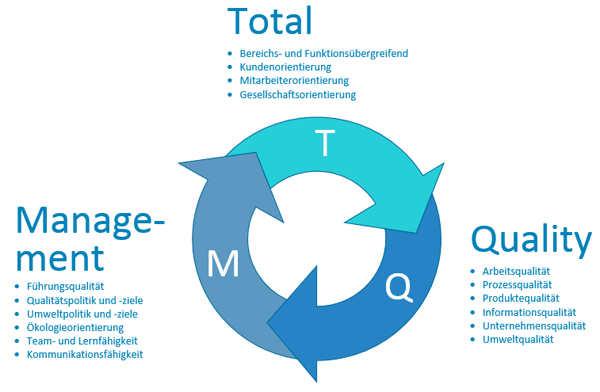Challenges and opportunities for organizational behavior are massive and rapidly changing for improving productivity and meeting business goals.
Although the problems with organizations and the solutions over the ages have not changed, the emphasis and surrounding environmental context certainly have changed.
Although the resulting lean and mean organizations offered some short-run benefits in terms of lowered costs and improved productivity, if they continued to do business, as usual, they would not be able to meet current or future challenges.
As a Harvard Business Review article argues, “These are scary times for managers”. The singular reason given for these frightening times – the increasing danger of disruptive change.
The nature of work is changing so rapidly that rigid job structures impede the work to be done now, and that may drastically change the following year, month, or even week.
13 challenges and opportunities of organizational behavior are;
Improving People’s Skills

Technological changes, structural changes, environmental changes are accelerated at a faster rate in the business field.
Unless employees and executives are equipped to possess the required skills to adapt to those changes, the targeted goals cannot be achieved in time.
These two different categories of skills – managerial skills and technical skills.
These skills can be enhanced by organizing a series of training and development programs, career development programs, induction, and socialization.
Improving Quality and Productivity

Quality is the extent to which the customers or users believe the product or service surpasses their needs and expectations.
For example, a customer who purchases an automobile has a certain expectation, one of which is that the automobile engine will start when it is turned on.
If the engine fails to start, the customer’s expectations will not have been met and the customer will perceive the quality of the car as poor. The key dimensions of quality as follows.
- Performance: Primary rating characteristics of a product such as signal coverage, audio quality, display quality, etc.
- Features: Secondary characteristics, added features, such as calculators, and alarm clock features in handphone
- Conformance: meeting specifications or industry standards, the workmanship of the degree to which a product’s design or operating characteristics match pre-established standards
- Reliability: The probability of a product’s falling within a specified period
- Durability: It is a measure of a product’s life having both economic and technical dimension
- Services: Resolution of problem and complaints, ease of repair
- Response: Human to human interfaces, such as the courtesy of the dealer « Aesthetics: Sensory characteristics such exterior finish
- Reputations: Past performance and other intangibles, such as being ranked first.
More and more managers are confronting to meet the challenges to fulfill the specific requirements of customers.
To improve quality and productivity, they are implementing programs like total quality management and reengineering programs that require extensive employee involvement.
Total Quality Management (TQM)

Total Quality Management (TQM) is a philosophy of management that is driven by the constant attainment of customer satisfaction through the continuous improvement of all organizational processes.
The components of TQM are;
(a) An intense focus on the customer,
(b) Concern for continual improvement,
(c) Improvement in the quality of everything the organization does,
(d) Accurate measurement and,
(e) Empowerment of employees.
Managing Workforce Diversity

This refers to employing different categories of employees who are heterogeneous in terms of gender, race, ethnicity, relation, community, physically disadvantaged, elderly people, etc.
The primary reason to employ the heterogeneous category of employees is to tap the talents and potentialities, harnessing the innovativeness, obtaining synergetic effect among the divorce workforce.
In general, employees wanted to retain their individual and cultural identity, values and lifestyles even though they are working in the same organization with common rules and regulations.
The major challenge for organizations is to become more accommodating to diverse groups of people by addressing their different lifestyles, family needs, and work styles.
Responding to Globalization

Today’s business is mostly market-driven; wherever the demands exist irrespective of distance, locations, climatic conditions, the business
operations are expanded to gain their market share and to remain in the top rank, etc. Business operations are no longer restricted to a particular locality or region.
The company’s products or services are spreading across nations using mass communication, the internet, faster transportation, etc.
More than 95% of Nokia (Now Microsoft) handphones are being sold outside of their home country Finland.
Japanese cars are being sold in different parts of the globe. Sri Lankan tea is exported to many cities around the globe.
Garment products of Bangladesh are exporting in the USA and EU countries. Executives of Multinational corporations are very mobile and move from one subsidiary to another more frequently.
Empowering People
The main issue is delegating more power and responsibility to the lower level cadre of employees and assigning more freedom to make choices about their schedules, operations, procedures and the method of solving their work-related problems.
Encouraging the employees to participate in the work-related decision will sizable enhance their commitment to work.
Empowerment is defined as putting employees in charge of what they do by eliciting some sort of ownership in them.
Managers are doing considerably further by allowing employees full control of their work.
Movement implies constant change an increasing number of organizations are using self-managed teams, where workers operate largely without a boss.
Due to the implementation of empowerment concepts across all the levels, the relationship between managers and the employees is reshaped.
Managers will act as coaches, advisors, sponsors, facilitators and help their subordinates to do their tasks with minimal guidance.
Coping with Temporariness
In recent times, the product life cycles are slimming, the methods of operations are improving, and fashions are changing very fast. In those days, the managers needed to introduce major change programs once or twice a decade.
Today, change is an ongoing activity for most managers.
The concept of continuous improvement implies constant change.
In yesteryears, there used to be a long period of stability and occasionally interrupted by a short period of change, but at present, the change process is an ongoing activity due to competitiveness in developing new products and services with better features.
Everyone in the organization faces today is one of permanent temporariness. The actual jobs that workers perform are in a permanent state of flux.
So, workers need to continually update their knowledge and skills to perform new job requirements.
Stimulating Innovation and Change
Today’s successful organizations must foster innovation and be proficient in the art of change; otherwise, they will become candidates for extinction in due course of time and vanished from their field of business.
Victory will go to those organizations that maintain flexibility, continually improve their quality, and beat the competition to the market place with a constant stream of innovative products and services.
For example, Compaq succeeded by creating more powerful personal computers for the same or less money than EBNM or Apple, and by putting their products to market quicker than the bigger competitors.
The emergence of E-Organisation & E-Commerce
It refers to the business operations involving the electronic mode of transactions. It encompasses presenting products on websites and filling the order.
The vast majority of articles and media attention given to using the Internet in business are directed at online shopping.
In this process, the marketing and selling of goods and services are being carried out over the Internet.
In e-commerce, the following activities are being taken place quite often – the tremendous numbers of people who are shopping on the Internet, business houses are setting up websites where they can sell goods, conducting the following transactions such as getting paid and fulfilling orders.
It is a dramatic change in the way a company relates to its customers. At present e-commerce is exploding. Globally, e-commerce spending was increasing at a tremendous rate.
Improving Ethical Behavior
The complexity in business operations is forcing the workforce to face ethical dilemmas, where they are required to define right and wrong conduct to complete their assigned activities.
For example,
- Should the employees of a chemical company blow the whistle if they uncover the discharging its untreated effluents into the river are polluting its water resources?
- Do managers give an inflated performance evaluation to an employee they like, knowing that such an evaluation could save that employee’s job?
The ground rules governing the constituents of good ethical behavior has not been clearly defined, Differentiating right things from wrong behavior has become more blurred.
Following unethical practices have become a common practice such as successful executives who use insider information for personal financial gain, employees in competitor businesses participating in massive cover-ups of defective products, etc.
Improving Customer Service
OB can contribute to improving organizational performance by showing drat how employees’ attitudes and behavior are associated with customer satisfaction.
In that case, service should be the first production-oriented by using technological opportunities like a computer, the internet, etc.
To improve customer service we need to provide sales service and also the after-sales service.
Helping Employees Balance Work-Life Conflicts
The typical employee in the 1960s or 1970s showed up at the workplace Monday through Friday and did his or her job 8 or 9-hour chunk of time.
The workplace and hours were specified. That’s no longer true for a large segment of today’s workforce.
Employees are increasingly complaining that the line between work and non-work time has become blurred, creating personal conflict and stress.
Many forces have contributed to blurring the lines between employees’ work life and personal life.
First, the creation of global organizations means their world never sleeps. At any time and on any day, for instance, thousands of General Electric employees are working somewhere.
Second, communication technology allows employees to do their work at home, in their cars, or on the beach in Cox’s Bazar.
This lets many people in technical and professional jobs do their work anytime and from any place.
Third, organizations are asking employees to put in longer hours.
Finally, fewer families have only a single breadwinner. Today’s married employee is typically part of a dual-career couple. This makes it increasingly difficult for married employees to find the time to fulfill commitments to home, spouse, children, parents, and friends.
Today’s married employee is typically part of a dual-career couple.
This makes it increasingly difficult for married employees to find the time to fulfill commitments to home, spouse, children, parents, and friends.
Employees are increasingly recognizing that work is squeezing out personal lives and they’re not happy about it.
For example, recent studies suggest that employees want jobs that give them flexibility in their work schedules so they can better manage work/life conflicts.
Also, the next generation of employees is likely to show similar concerns.
A majority of college and university students say that attaining a balance between personal life and work is a primary career goal. They want a life as well as a job.
Flattening World
Thomas Friedman’s book The World Is Flat: A Brief History of the Twenty-First Century makes the point that the Internet has “flattened” the world and created an environment in which there is a more level playing field in terms of access to information.
This access to information has led to an increase in innovation, as knowledge can be shared instantly across time zones and cultures.
It has also created intense competition, as the speed of business is growing faster and faster all the time.
In his book Wikinomics, Don Tapscott notes that mass collaboration has changed the way work gets done, how products are created, and the ability of people to work together without ever meeting.